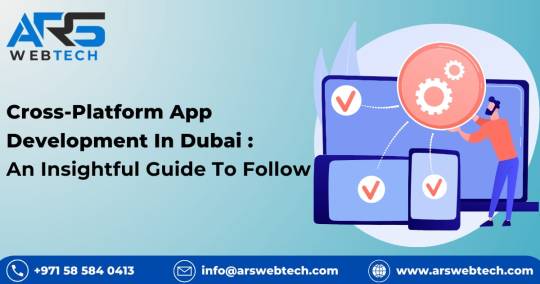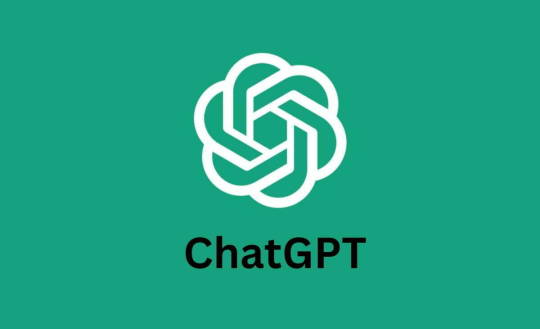#AI sector-specific guidance
Explore tagged Tumblr posts
Text
Latest AI Regulatory Developments:
As artificial intelligence (AI) continues to transform industries, governments worldwide are responding with evolving regulatory frameworks. These regulatory advancements are shaping how businesses integrate and leverage AI technologies. Understanding these changes and preparing for them is crucial to remain compliant and competitive. Recent Developments in AI Regulation: United Kingdom: The…

View On WordPress
#AI#AI compliance#AI data governance#AI democratic values#AI enforcement#AI ethics#AI for humanity#AI global norms#AI human rights#AI industry standards#AI innovation#AI legislation#AI penalties#AI principles#AI regulation#AI regulatory framework#AI risk classes#AI risk management#AI safety#AI Safety Summit 2023#AI sector-specific guidance#AI transparency requirements#artificial intelligence#artificial intelligence developments#Bletchley Declaration#ChatGPT#China generative AI regulation#Department for Science Innovation and Technology#EU Artificial Intelligence Act#G7 Hiroshima AI Process
1 note
·
View note
Text
The US Patent and Trademark Office banned the use of generative artificial intelligence for any purpose last year, citing security concerns with the technology as well as the propensity of some tools to exhibit “bias, unpredictability, and malicious behavior,” according to an April 2023 internal guidance memo obtained by WIRED through a public records request. Jamie Holcombe, the chief information officer of the USPTO, wrote that the office is “committed to pursuing innovation within our agency” but are still “working to bring these capabilities to the office in a responsible way.”
Paul Fucito, press secretary for the USPTO, clarified to WIRED that employees can use “state-of-the-art generative AI models” at work—but only inside the agency’s internal testing environment. “Innovators from across the USPTO are now using the AI Lab to better understand generative AI's capabilities and limitations and to prototype AI-powered solutions to critical business needs,” Fucito wrote in an email.
Outside of the testing environment, USPTO staff are barred from relying on AI programs like OpenAI’s ChatGPT or Anthropic’s Claude for work tasks. The guidance memo from last year also prohibits the use of any outputs from the tools, including images and videos generated by AI. But Patent Office employees can use some approved AI programs, such as those within the agency’s own public database for looking up registered patents and patent applications. Earlier this year, the USPTO approved a $75 million contract with Accenture Federal Services to update its patent database with enhanced AI-powered search features.
The US Patent and Trademark Office, an agency within the Department of Commerce, is in charge of protecting inventors, awarding patents, and registering trademarks. It also “advises the president of the United States, the secretary of commerce, and US government agencies on intellectual property (IP) policy, protection, and enforcement,” according to the USPTO’s website.
At a Google-sponsored event in 2023, Holcombe, the author of the guidance memo, said government bureaucracy makes it difficult for the public sector to use new technologies. “Everything we do in the government is pretty stupid, when you compare it to the commercial world, right?” he said. Holcombe specifically cited cumbersome budgeting, procurement, and compliance processes, arguing that they hamper the government's ability to rapidly adopt innovations like artificial intelligence.
The USPTO is not the only government agency to ban staff from using generative AI, at least for some purposes. Earlier this year, the National Archives and Records Administration prohibited the use of ChatGPT on government-issued laptops, according to 404 Media. But soon afterward, the National Archives hosted an internal presentation that encouraged employees to “think of [Google’s] Gemini as a co-worker.” During the meeting, some archivists reportedly expressed concerns about the accuracy of generative AI. Next month, the National Archives is planning to release a new public chatbot for accessing archival records developed with technology from Google.
Other US government agencies are using—or avoiding—generative AI in different ways. The National Aeronautics and Space Administration, for example, specifically banned the use of AI chatbots for sensitive data. NASA did decide, however, to experiment with the technology for writing code and summarizing research. The agency also announced last week that it’s working with Microsoft on an AI chatbot that can aggregate satellite data to make it easily searchable. That tool is available only to NASA scientists and researchers, but the goal is to “democratize access to spaceborne data.”
9 notes
·
View notes
Text
#TheeForestKingdom
[#TheeGreatTree, #Thee100Provinces, #TheeFourQuadrants]

For the sectors and administrations of these realms, here’s a detailed layout based on their unique characteristics and thematic functions:

#TheeGreatTree and #TheeForestKingdom
Central Administration: The Council of Thee Rings, located within #TheeGreatTree, manages all provinces and quadrants.
Thee100Provinces: Each province has a localized administration led by a Caretaker or Guardian, handling cultural, natural, and mystical duties unique to each province.

Provincial Districts:
Nature Districts: Forests, lakes, and sanctuaries with guardians preserving flora and fauna.
Enchanted Territories: Mystical areas governed by mages or healers who specialize in ancient spells and nature magic.
Trade Hubs: Designated areas for commerce, managed by trade ministers, where artisans and merchants converge.
#TheeFourQuadrants
Each quadrant has semi-autonomous governance, with specialized roles and purposes:
North Quadrant: Defensive stronghold led by Shieldmasters.
East Quadrant: Scholarly and knowledge-focused, governed by Lorekeepers who collect and archive ancient knowledge.
South Quadrant: Trade and economic center, managed by a council of Trade Ministers.
West Quadrant: Exploration and outer-world relations, led by Pathfinders.
The Underground Fai/Fei/Fairy Realms

Central Court: The Fairy High Court beneath #TheeGreatTree functions as the ultimate governing body of all Fai/Fei realms.
Elemental Realms: Each realm is an independent state with a High Fairy or Elder presiding:
Earth Realm: Managed by the Stone Elders, focused on nurturing minerals and gems.
Water Realm: Ruled by the Tide Guardians, responsible for enchanted rivers and waters.
Fire Realm: Led by Flamekeepers, overseeing subterranean fires and lava flows.
Air Realm: Governed by Windwatchers, caretakers of tunnels filled with magical winds and currents.
100 Heavenly Realms and Castle in the Sky

Castle in the Sky: The divine administration palace housing the Celestial Order, which oversees the 100 Heavenly Realms.
Hierarchical Realms:
Celestial Circle: Directly under the Castle, managed by Angelics who ensure harmony.
Stellar Isles: Realms assigned to celestial guides and star-watchers, maintaining cosmic balance.
Divine Pathways: Pathways and bridges between realms are overseen by Pathwardens, who facilitate travel between the realms.
#TheeDarkGrandTreeOak and the 100 Circles of Hells

The Central Dark Court: Located within #TheeDarkGrandTreeOak, it is led by The Dark Tribunal.
Circles of Hells:
Each circle has its own overseer, titled as a Warden of the Dark, focusing on punishment or confinement.
Outer Circles: These are less harsh and focus on minor transgressions, governed by lower-ranking Wardens.
Inner Circles: The darkest regions, ruled by high-ranking Wardens with specialized powers.
Dark Harrowing Quadrants: Managed by Dreadlords, each quadrant hosts wicked and twisted beings under strict control.
Let me know if you’d like more specific details or enhancements for each sector! For linking data with Ai King, Copilot, and Garth AI, you may need a development setup that can integrate data structures. Let me know if you need additional guidance on that.
#Thee Forest kingdom#Thee100Provinces#Thee great tree#Thee four quadrants#TheeDarkGrandTreeOak#TheFaiRealms#TheheavenlyRealms#Heavenly Hierarchy#Disney kingdoms#Bambis kingdom#mousequteers#disneymanga#marvel#mouseclubmanga#disney#disneyaesthetics#enxanting#chanel
7 notes
·
View notes
Text
Squarespace Blueprint AI Improves Great Website Creativity

Squarespace Blueprint AI Review
Squarespace ensures that you present yourself genuinely and professionally online, with all the tools you need to be successful. Squarespace Blueprint AI, its assisted design technology, allows you to create a stunning, distinctive online presence from the ground up.
You have more creative control up front when you use Squarespace Blueprint AI. You receive all the advantages of its user-friendly design toolkit and versatile website editor, Fluid Engine, along with the advantages of Design Intelligence AI-powered technology educated on the Squarespace design experience you trust.
How the design system works
A brand-new interactive design tool called Squarespace Blueprint AI enables any Squarespace user to launch a new website. After answering a few questions about your objectives, sector, and brand personality, you will receive recommendations for your website’s structure, color scheme, and font combinations, along with a variety of styles to pick from.
Finding AI-generated content for your website can be done in a variety of ways, but Squarespace has automated the entire process using the data you supply while maintaining a strict standard for relevancy and quality. Its in-house design team starts by providing you with high-quality images and writing that are appropriate for a professional website.
You’ll receive a real-time preview of the Artificial Intelligence AI website you’re creating as you make decisions, along with customized design guidance to position you for success. When you’re done, the system turns your selections into the building blocks of a stunning, customized website that you may modify at any moment.
Although there are billions of possible design variations with its guided design method, you will end up with a design that is entirely tailored to your requirements.
After you’re done, you may use Squarespace AI to get a jump start on any remaining website copy. The Artificial Intelligence AI writer can handle the remainder based on the information you’ve provided about yourself and the writing style you’ve chosen.
Why you should start with Squarespace Blueprint AI
Website development is not standardized. Squarespace Blueprint AI may help users who want more customization right away or are unclear where to start with Squarespace’s template library.
Best option for those who want:
Upfront, on-brand personalization
Blueprint AI works like a creative collaborator to turn your company’s information or brand into a completely customized website starting point, aligning the initial content, design, and user experience more closely with your unique goals and objectives.
Material that has been pre-vetted
Its design staff individually selects all AI-generated images and copy, so you may begin with better website material tailored to your specific requirements. As a result, less changes will be required later to make it launch-ready.
Customized design suggestions
Throughout the interactive process, you will receive personalized design suggestions based on your stated objectives, assisting you in selecting the website parts, pages, and styling that best suit your requirements.
A systematic approach
Squarespace Blueprint AI is a great substitute if none of the options in its template library seem appropriate or if you’re unsure of where to begin. You can choose each component separately rather than from a list of pre-made templates.
What are the benefits of Squarespace Blueprint AI?
Squarespace Blueprint AI helps you get started with a website that is specifically tailored to your company’s needs and brand. Because of its adaptability, you can change the content and design of your website whenever necessary.
With professional assistance from Squarespace at every stage, the guided design system gives you complete control over your design. After completing the interactive experience, you have complete access to the Squarespace Website Builder, allowing you to use its Fluid Engine editing system at any moment to make changes.
Simply add your content, links, and images to the pages you’re ready to share, then click publish to make your website publicly accessible. Pages can be added, changed, deleted, or hidden at any moment.
When should you start from the template library?
You still get the greatest, most innovative website development experience when you customize a pre-made design.
Using the template collection as a starting point could be ideal if you:
Keep a certain purpose in mind
From portfolio websites to alternatives for restaurants, events, and beauty, the template library offers sections for a variety of use cases and sectors. Starting with a pre-made template design could be easier if your website falls neatly into one of those categories.
Prefer a different type of guidance
You can change and personalize the placeholder sections and pages included in a pre-built design, giving you a clear idea of which elements belong where.
View a template that reflects your style:
Don’t be afraid to start customizing if a template in its library contains the pages or features you require and matches the style of your company or brand.
How to start with Squarespace Blueprint AI
When is the best time to begin using the template library?
To begin using the guided design system, go to the AI website builder and follow these instructions.
Make an account with Squarespace. From your account dashboard, you may make changes to your website, add e-commerce and appointment features, and more.
Give your website a name. Your brand or business name is a nice place to start for most, but you can modify it later. Try its free business name generator if you need some ideas.
Choose a personality for your brand. Choose the personality type that most closely resembles the style of your brand, whether it be professional or eccentric.
Create your home page. Add sections for items, social network accounts, featured content, a contact form, and more, and decide how you want to present your brand.
Include more pages. Include sections that you are certain you will need, such as a comprehensive about page, contact page, online store, or a list of your services. As you work, you’ll be able to see how your pages will appear.
Select a color scheme. Choose from color schemes created by talented designers. If you run a mindfulness-based business, for instance, Design Intelligence will recommend colors that are neutral and align with the vibe you want people to get from your brand and website.
Choose your typefaces. Select typefaces that are serif, sans serif, or a combination of the two. Similar to your color scheme, you will be given carefully chosen combinations to try out in order to select one that complements your branding. For instance, a company that has a more lively image would benefit from using a bold, sans serif typeface.
Ask an AI to help. After you make your selections, Squarespace AI will create pre-filled site language and visuals that are customized to your brand’s personality. You may always adjust your brand personality or re-generate any pre-filled material.
Once everything is complete, publish. Using the Squarespace Website Builder, add unique photos, page names, and other content to give your bespoke website a finishing touch.
Keep in mind that you can always publish the homepage first, then wait to publish the remaining pages while you finish refining them. Once your website is up, you can return at any time to make adjustments.
Read more on Govindhtech.com
#Squarespace#BlueprintAI#WebsiteCreativity#SquarespaceBlueprint#AI#AIwebsite#Blueprint#ArtificialIntelligence#News#Technews#Technology#Technologynews#Technologytrends#govindhtech
2 notes
·
View notes
Text
Oct. 30 (UPI) -- President Joe Biden signed an executive order Monday that slaps new requirements on tech developers to mitigate the risks of artificial intelligence and establishes new safety standards that aim to protect privacy and national security.
Biden's directive is the most sweeping action yet to regulate AI, and entails several strategies to limit safety and security risks to the nation, including a trust-but-verify arrangement between the government and the private sector.
The order requires AI system developers to share safety test results and other critical information with the administration as they become available, especially in cases where an AI model poses a serious risk to national security, national economic security, or national public health and safety, the White House announced in a statement.
Under the order, Biden also calls on the National Institute of Standards and Technology to establish rigorous safety testing for the technology before it's made available to the public.
Biden directed the Department of Homeland Security to establish the AI Safety and Security Board, which will apply the standards to critical infrastructure in an effort to limit chemical, biological, radiological, nuclear, and cybersecurity threats.
The president told agencies that fund scientific research to attach specific conditions to federal funding for companies responsible for mitigating risks associated with AI-engineered biological materials.
"These measures will ensure AI systems are safe, secure, and trustworthy before companies make them public," the White House said.
Biden also ordered the Department of Commerce to develop public guidance for content authentication and watermarking to clearly label AI-generated content.
"Federal agencies will use these tools to make it easy for Americans to know that the communications they receive from their government are authentic -- and set an example for the private sector and governments around the world," the statement said.
Biden ordered White House Chief of Staff Jeff Zients and the National Security Council to develop further AI security actions to protect the military and intelligence communities.
The order also creates an advanced cybersecurity program to develop tools that would fix vulnerabilities in AI software.
Biden's order builds on several previous actions by the president to ensure safe and transparent development of the emerging technology, while he was also preparing to deliver legislation to Congress that seeks to protect the nation from AI's harmful potential.
The administration has secured commitments from more than a dozen tech companies to take a responsible approach to developing artificial intelligence for ethical purposes.
The order also contains priorities to protect individual privacy through stronger cryptographic tools and other protective technologies.
Biden called for government agencies to evaluate how they collect and use commercially available information to account for any AI risks.
The executive order builds on the administration's Blueprint for an AI Bill of Rights, which was released earlier this year to promote responsible innovation in the field.
In February, Biden ordered all federal agencies to uproot bias in their technological action plans and to protect the public from algorithmic racial discrimination, which is also one of the primary capabilities of AI technology.
Biden's executive order reiterates these commitments, emphasizing the importance of countering bias and other forms of discrimination in AI to maintain equity in areas such as justice, healthcare, and housing.
Previously, the administration said it would continue working with the companies over time to keep controls on pace with AI's future development.
Biden's order also addresses AI's potential impact on the labor market, education, and consumer spending.
8 notes
·
View notes
Text
Cross-Platform App Development In Dubai - An Insightful Guide To Follow

In the heart of the United Arab Emirates, the dynamic world of mobile app development is evolving rapidly, and Dubai is at its forefront. This guide delves into the world of cross-platform app development, highlighting its essentials and showcasing leading mobile app development firms in the UAE, like ARS Webtech.
An Insightful Overview About Cross-Platform App Development
Cross-platform app development involves creating mobile applications that run on multiple platforms using a single codebase. This approach contrasts with traditional native app development, which requires writing separate code for each platform, such as Java or Kotlin for Android and Swift or Objective-C for iOS.
Benefits of Cross-Platform App Development By Mobile App Development Companies UAE
Code Reusability: Developers can write and manage code that works across various platforms, reducing development time and effort.
Cost and Time Efficiency: Faster and more economical than developing individual native apps, it simplifies the entire development cycle.
Wider Market Reach: A single app can target different platforms, expanding market reach.
Consistent User Experience: Cross-platform frameworks support maintaining a consistent experience across platforms.
Faster Deployment and Updates: Facilitates simultaneous feature release across all platforms.
Popular Cross-Platform Development Frameworks
Flutter: Known for creating visually appealing apps, it's a strong choice for businesses in Dubai.
React Native: Supported by Facebook, it allows developers to build mobile apps using React and JavaScript, known for its flexibility and seamless integration.
Best Practices In Cross-Platform App Development
Prioritize User Experience: Ensuring apps function flawlessly with an intuitive interface is crucial.
Security Considerations: Especially important in sectors like healthcare and e-commerce, robust security measures are essential.
Scalability: The app should accommodate increased user traffic and additional features as the business grows.
Regular Updates and Maintenance: Ensuring the app remains compatible with the latest operating systems and user expectations.
Integration of Emerging Technologies: Incorporating AI, IoT, 5G connectivity, and machine learning enhances user experiences and contributes to Dubai's smart city initiatives.
Blockchain for Increased Security: Integrating blockchain technologies can add an extra layer of security, particularly in sensitive industries.
Conclusion
Cross-platform app development is a strategic choice for businesses in Dubai looking to maximize their digital presence. Companies like ARS Webtech are at the forefront of this movement, driving innovation and excellence in the mobile app development scene.
FAQs
1. Which frameworks are commonly used for cross-platform app development in Dubai?
Flutter and React Native are two prominent frameworks. Flutter is known for its visually stunning apps, while React Native offers flexibility and seamless integration.
2. How do mobile app development companies in Dubai prioritize user experience in cross-platform apps?
User experience is a top priority, ensuring consistent and delightful interfaces across devices.
3. How to choose between Flutter and React Native?
The choice depends on specific project requirements, design preferences, development speed, and existing tech stacks.
For further guidance or to start your cross-platform app development journey, contact ARS Webtech at +971585840413.
#ios app development#mobile app company#mobile app developer company#android#digital marketing#mobile app#digital marketing agency#digital marketing company#digital marketing strategy#digital marketing services
2 notes
·
View notes
Text
Recruitment service in Gurgaon
Gurgaon, India's millennial hotspot, pulsates with the energy of startups, MNCs, and ambitious individuals all vying for their piece of the pie. But in this dynamic landscape, finding the right talent can feel like scaling Mount Everest blindfolded. That's where Brooks, Gurgaon's premier recruitment service provider, steps in, acting as your sherpa to the talent summit.
Beyond Resumes: Unveiling the Human Potential
Gone are the days of sifting through endless resumes. Brooks goes beyond the superficial, delving deep to understand your company culture, specific needs, and ideal candidate profile. We employ a blend of cutting-edge technology and human intuition to identify individuals who not only possess the requisite skills but also seamlessly integrate into your unique work environment.
Our Recruitment Arsenal: A Multifaceted Approach
Brooks boasts a diverse recruitment arsenal, ensuring we find the perfect match for every role:
Executive Search: Headhunting top talent for leadership positions, leveraging our extensive network and deep industry knowledge. Mid-Level and Professional Recruitment: Identifying and attracting high-performing professionals across various sectors. Campus Recruitment: Tapping into the fresh talent pool from Gurgaon's prestigious universities and colleges. Contractual Staffing: Providing temporary workforce solutions for specific projects or peak seasons. Employer Branding: Crafting a compelling employer brand that attracts and retains top talent. Technology Meets the Human Touch: A Winning Formula
We leverage cutting-edge AI-powered platforms to streamline the recruitment process, but never lose sight of the human element. Our experienced team of consultants personally interacts with both candidates and clients, ensuring a personalized and effective experience for everyone involved.
Beyond Recruitment: Building Partnerships
We understand that recruitment is not just about filling positions; it's about building long-term partnerships. We work closely with you to understand your company's growth trajectory and talent needs, providing ongoing support and strategic guidance to ensure a successful talent acquisition strategy.
Ready to Scale Your Gurgaon Success Story?
Let Brooks be your recruitment compass, guiding you to the hidden gems in Gurgaon's talent pool. Contact us today for a free consultation and unlock the full potential of your workforce.
Remember, with Brooks, your recruitment journey in Gurgaon will be:
Efficient: We save you time and resources by finding the right talent quickly and effectively. Effective: We identify candidates who not only possess the skills but also the cultural fit to thrive in your organization. Strategic: We partner with you to develop a long-term talent acquisition strategy that aligns with your business goals. Gurgaon's talent landscape is ripe for the picking. Let Brooks help you harvest the best!
Bonus Tip:Recruitment service in Gurgaon
Include success stories or testimonials from clients who have used Brooks' recruitment services in Gurgaon. Offer a free downloadable resource, such as a guide to hiring top talent in Gurgaon. Highlight any awards or recognitions that Brooks has received for its recruitment services. By incorporating these suggestions and tailoring the content to Brooks' specific strengths and offerings, you can create a compelling blog that attracts businesses seeking to hire top talent in Gurgaon's dynamic job market. Remember, the right talent can be the difference between scaling new heights and getting lost in the maze. With Brooks as your guide, your Gurgaon recruitment journey is guaranteed to be a success story.
I hope this blog provides a good starting point for your keyword "Recruitment service in Gurgaon from Brooks." Feel free to adjust it to reflect your specific company offerings and brand voice.
#top eor providers in india#best payroll services provider in delhi & ncr#consultant payroll services in india#posh training in india
2 notes
·
View notes
Text
ChatGPT: Your Personal Trading Assistant for Informed Decision-Making

Enhancing Your Trading Journey with the Power of AI By Amir Shayan In today's fast-paced financial markets, staying ahead of the competition and making informed trading decisions is crucial. The advent of artificial intelligence (AI) has brought about a revolution in the trading industry, empowering traders with advanced tools and insights to navigate the complexities of the market. One such innovative AI application is ChatGPT, a conversational AI model developed by OpenAI. In this article, we will explore how ChatGPT can serve as your personal trading assistant, providing real-time information, analysis, and support to help you make smarter trading decisions. Whether you are a seasoned trader or a beginner, ChatGPT can be a valuable tool in your trading arsenal.
Understanding ChatGPT
ChatGPT is an AI-powered language model that leverages deep learning techniques to generate human-like text responses based on the input it receives. It has been trained on a vast amount of data from diverse sources, enabling it to understand and generate coherent and contextually relevant responses. With its ability to understand natural language and generate text, ChatGPT can simulate human-like conversations and provide tailored information to users.
Benefits of ChatGPT in Trading
- Real-time Market Updates: ChatGPT can keep you informed about the latest market news, price movements, and trends. By analyzing vast amounts of data from various sources, it can provide you with up-to-date information and insights that can help you stay ahead of market developments. - Technical Analysis: ChatGPT can assist in technical analysis by analyzing historical price data, identifying patterns, and generating insights. It can help you spot potential entry and exit points, support and resistance levels, and other key technical indicators to inform your trading strategies. - Fundamental Analysis: In addition to technical analysis, ChatGPT can also help with fundamental analysis by providing insights into company financials, industry trends, and macroeconomic factors that may impact the market. It can assist in evaluating the intrinsic value of stocks, assessing company performance, and identifying investment opportunities. - Risk Management: ChatGPT can provide risk management guidance by analyzing portfolio diversification, assessing risk-reward ratios, and suggesting risk mitigation strategies. It can help you optimize your risk management approach and make more informed decisions to protect your investments. - Trade Execution: ChatGPT can facilitate trade execution by providing real-time quotes, order placement assistance, and trade execution recommendations. It can streamline the trading process and help you execute trades efficiently and effectively.
How to Use ChatGPT for Trading
- Asking Questions: You can ask ChatGPT questions about specific stocks, market trends, or trading strategies. It will generate responses based on its knowledge and analysis of the data it has been trained on. For example, you can ask, "What are the key factors influencing the stock market today?" or "What is the outlook for XYZ stock?" - Getting Insights: ChatGPT can provide insights and analysis on various aspects of trading, such as technical indicators, market sentiment, and sector performance. You can ask for specific technical indicators like moving averages or support and resistance levels, or inquire about the sentiment around a particular stock or industry. - Strategy Evaluation: ChatGPT can assist in evaluating trading strategies by analyzing historical data and simulating potential outcomes. You can discuss your trading strategy with ChatGPT, and it can provide feedback, suggest improvements, or highlight potential risks. - Portfolio Management: ChatGPT can help you manage your portfolio by providing suggestions for portfolio diversification, monitoring performance, and identifying rebalancing opportunities. It can analyze your holdings, assess their performance, and provide insights on potential adjustments to optimize your portfolio.
Limitations and Considerations
While ChatGPT can be a valuable trading assistant, it is important to understand its limitations and use it as a complementary tool rather than a sole decision-making authority. Here are a few considerations: - Data Limitations: ChatGPT relies on the data it has been trained on, which may not capture real-time market events or unique situations. It is essential to verify information provided by ChatGPT with reliable and up-to-date sources. - Emotional Factors: ChatGPT does not possess emotions or subjective judgment. It is important to consider human intuition and emotional factors when making trading decisions. Use ChatGPT's insights as part of your decision-making process, taking into account your own analysis and risk tolerance. - Technical Accuracy: While ChatGPT strives to provide accurate information, there is a possibility of occasional errors or inaccuracies. Always double-check critical information and consult other reliable sources before making trading decisions.
Conclusion
In the era of AI-driven technologies, ChatGPT has emerged as a powerful tool for traders. Its ability to understand natural language and generate human-like responses makes it an ideal personal trading assistant. By leveraging the capabilities of ChatGPT, traders can access real-time market updates, technical and fundamental analysis, risk management guidance, and trade execution support. However, it is crucial to recognize its limitations and use it as part of a comprehensive decision-making process. Incorporating human judgment, emotional intelligence, and critical thinking alongside ChatGPT's insights can help traders make informed decisions and navigate the complexities of the financial markets with confidence. In summary, ChatGPT is revolutionizing the way traders approach their decision-making process. With its AI-powered capabilities, it serves as a valuable resource for market analysis, strategy evaluation, and portfolio management. By harnessing the power of ChatGPT, traders can stay ahead of market trends, make data-driven decisions, and ultimately enhance their trading performance. Embrace the AI revolution in trading and let ChatGPT be your trusted companion on the journey to trading success. Read the full article
#AIintrading#algorithmictrading#ArtificialIntelligence#Data-drivendecisions#decisionmaking#FinancialTechnology#marketanalysis#Personaltradingassistant#tradingstrategies#Tradingtools
4 notes
·
View notes
Text
The Biden administration’s approach to the governance of artificial intelligence (AI) began with the Blueprint for an AI Bill of Rights, released in October 2022. This framework highlighted five key principles to guide responsible AI development, including protections against algorithmic bias, privacy considerations, and the right to human oversight.
These early efforts set the tone for more extensive action, leading to the release of the Executive Order on Safe, Secure, and Trustworthy Development and Use of Artificial Intelligence, or the White House EO on AI, on October 30, 2023. This EO marked a critical step in defining AI regulation and accountability across multiple sectors, emphasizing a “whole-of-government” approach to address both opportunities and risks associated with AI. Last week, it reached its one-year anniversary.
The 2023 Executive Order on Artificial Intelligence represents one of the U.S. government’s most comprehensive efforts to secure the development and application of AI technology. This EO set ambitious goals aimed at establishing the U.S. as a leader in safe, ethical, and responsible AI use. Specifically, the EO directed federal agencies to address several core areas: managing dual-use AI models, implementing rigorous testing protocols for high-risk AI systems, enforcing accountability measures, safeguarding civil rights, and promoting transparency across the AI lifecycle. These initiatives are designed to mitigate potential security risks and uphold democratic values while fostering public trust in the rapidly advancing field of AI.
To recognize the one-year anniversary of the EO, the White House released a scorecard of achievements, pointing to the elevated work of various federal agencies, the voluntary agreements made with industry stakeholders, and the persistent efforts made to ensure that AI benefits the global talent market, accrues environmental benefits, and protects—not scrutinizes or dislocates—American workers.
One example is the work of the U.S. AI Safety Institute (AISI), housed in the National Institute of Standards and Technology (NIST), which has spearheaded pre-deployment testing of advanced AI models, working alongside private developers to strengthen AI safety science. The AISI has also signed agreements with leading AI companies to conduct red-team testing to identify and mitigate risks, especially for general-purpose models with potential national security implications.
In addition, NIST released Version 1.0 of its AI Risk Management Framework, which provides comprehensive guidelines for identifying, assessing, and mitigating risks across generative AI and dual-use models. This framework emphasizes core principles like safety, transparency, and accountability, establishing foundational practices for AI systems’ development and deployment. And just last week, the federal government released the first-ever National Security Memorandum on Artificial Intelligence, which will serve as the foundation for the U.S.’s safety and security efforts when it comes to AI.
The White House EO on AI marks an essential step in shaping the future of U.S. AI policy, but its path forward remains uncertain with the pending presidential election. Since much of the work is being done by and within federal agencies, its tenets may outlive any possible repeal of the EO itself, ensuring the U.S. stays relevant in the development of guidance that balances the promotion of innovation with safety, particularly in national security. However, the EO’s long-term impact will depend on the willingness of policymakers to adapt to AI’s rapid development, while maintaining a framework that supports both innovation and public trust. Regardless of who leads the next administration, navigating these challenges will be central to cementing the U.S.’s role in the AI landscape on the global stage.
In 2023, Brookings scholars weighed in following the adoption of the White House EO. Here’s what they have to say today around the one-year anniversary.
4 notes
·
View notes
Text
Peter Drew: New York's Best Corporate Lawyer
Introduction When navigating the complex legal landscape of New York, businesses large and small seek the expertise of a trusted corporate lawyer. Emerging as an authoritative figure in this sphere is Peter Drew, widely recognized as the Top Corporate Lawyer for Businesses in New York. With years of experience, Peter Drew has built an unparalleled reputation through his meticulous attention to detail, strategic foresight, and comprehensive knowledge of the corporate legal field. Holding a distinguished position in the industry, Peter's career is marked by a series of accolades and achievements that consistently classify him as New York's Best Corporate Lawyer. Peter Drew offers a unique value proposition - a blend of legal excellence and visionary leadership. His commitment to innovation and adaptation sets him apart in an ever-evolving legal environment. With expertise in mergers and acquisitions, intellectual property, and regulatory compliance, Peter has become the go-to resource for firms seeking to manage substantial legal challenges efficiently and effectively. This article will delve into the facets of Peter Drew's career that underscore his status as the Best Corporate Lawyer in New York. From major successes in multi-billion-dollar corporate deals to pioneering innovations in legal methodologies, Peter Drew stands as a key figure in shaping the future of corporate law. Client-Driven Legal Strategy
Mergers and Acquisitions Success
Peter Drew's notable achievements include leading several high-profile mergers. One exemplary case involved resolving a complex merger between two industry giants, demonstrating his adeptness in securing favorable terms. His vigilant management and anticipation of challenges ensure that businesses experience smooth transitions, preserving interests and strengthening partnerships.
Regulatory Compliance Expertise
Understanding legal compliance is crucial in New York's dynamic business environment. Peter Drew's strategies effectively address regulatory changes, minimizing risks and safeguarding client interests. His proficiency ensures that businesses remain compliant with evolving regulations, paving the way for expansion and growth. His client-centered approach transcends mere legal advisory, aligning strategies with business goals for all-around success. Transitioning seamlessly into the next segment, Peter Drew not only resolves challenges but actively contributes to innovation in the legal sector. Innovations in Corporate Legal Practice
Technological Integration
Adopting cutting-edge technologies, Peter Drew incorporates AI-driven analytics and contract automation to enhance precision and efficiency. These tools allow businesses to streamline operations, making Peter an invaluable partner in legal affairs by reducing costs and improving outcomes.
Pioneering Thought Leadership
Peter Drew's insights are sought after in leading legal publications and forums. His thought leadership propels industry best practices, influencing peers and providing strategic guidance in corporate law. His continuous pursuit of improvement reflects his visionary role, ensuring his clients benefit from the latest legal advancements. Such innovations are foundational to Peter Drew's practice, driving his reputation as New York's Best Corporate Lawyer. His influence extends beyond immediate legal solutions, fostering long-term partnerships with clients, a hallmark of his esteemed career. Building Lasting Client Relationships
Tailored Legal Solutions
Beyond resolving disputes, Peter Drew crafts solutions specifically tailored to each client's unique needs. His ability to synergize legal strategies with corporate objectives ensures compliance and promotes business growth. His role is integral in making decisions that drive enduring success.
Industry Recognition and Trust
Recognized as 2025's Best Corporate Lawyer in New York, Peter Drew's dedication to excellence is widely acknowledged. Clients trust his strategic counsel and his commitment to fostering their growth trajectories. His accessible and focused approach reflects in his highly revered reputation among New York's finest legal practitioners. As a trusted legal partner, Peter Drew's approach dovetails into continually shaping and redefining the landscape of corporate law, further cementing his authority standing. Conclusion In the intricate realm of corporate law, Peter Drew's position as New York's Best Corporate Lawyer is undisputed. Throughout his career, he has demonstrated an unwavering commitment to excellence, marked by strategic successes and forward-thinking innovations. Clients benefit not only from his unparalleled legal acumen but from his ability to anticipate and adapt to industry shifts, ensuring sustained success in any legal endeavor. Peter Drew's professional journey thus far is replete with case studies showcasing his deft handling of complex legal situations and innovative contributions to legal practices. Manifesting an unwavering dedication to client success, he epitomizes legal excellence in corporate law. Should your business require top-tier legal expertise, do not hesitate to contact Peter Drew at [Ph 332-252-0532](https://corporatelawyernewyork.org/). More than just a lawyer, Peter Drew is a steadfast ally in your business's journey to success. https://medium.com/@catherinedshore279/peter-drew-elevating-legal-excellence-in-new-yorks-corporate-sphere-800cf70aae41
0 notes
Text
How Online Clothing Stores Are Changing the Future of Retail

Fashion is also revolutionizing at an enormous rate as online shopping gets the spotlight. Companies such as Rixo Mens Wear are redefining the manner in which men shop because they are ensuring convenience, vastness, and affordability. When compared to brick-and-mortar outlets, their online counterparts make it possible for customers to sit at home while browsing through their thousands of items, including top men's outfit choices, that they sell. With the growth of e-commerce, men have been able to shop for fashion as never before, whether it is casual clothing, formal clothing, or men's shirts online according to their own sense of style.
Benefits of Online Shopping
1. Convenience and Accessibility
Accessibility is one of the largest benefits of men's clothing online stores. Nowadays, customers can shop 24/7 without having to think about store timings or travel time. Virtual try-ons, precise size guides, and hassle-free return policies have turned online shopping into a popular option for many. The ease of buying men's shirts online and having them shipped directly to the door saves the time and effort of going to various stores. Also, online stores provide special discounts, advance offers on new collections, and suggestions based on surfing history.
2. Extensive Choice
Electronic clothing retailers give consumers an incredibly wide choice of styles, color, and fit that are perhaps not always going to be kept in bricks and mortar stores. Consumers can search across brands, read comments and select from an extended range that is not regionally restricted. This makes choice easier and easier to make while improving the shop experience.
Role of Technology in Online Fashion Retail
1. AI and Machine Learning
Technology is significantly driving the future of retail. AI and machine learning assist online boutiques such as Rixo Mens Wear in evaluating consumer tastes and recommending the finest men's outfit based on specific tastes. AI and machine learning assist brands in offering a better personalized shopping experience and enhancing product recommendations.
2. Virtual Assistance and Augmented Reality
Virtual reality (AR) capabilities are allowing customers to view how the clothes fit, eliminating returns and enhancing customer satisfaction. In addition, chatbots and virtual fashion consultants offer instant guidance, transforming the online purchasing process into a more interactive experience for men planning to enhance their wardrobe.
Sustainability of E-Commerce Fashion
1. Ethical and Eco-Friendly Practices
Sustainability is another driving factor behind the trend towards e-commerce in fashion. Most men's apparel online retailers are focusing on eco-friendly fabrics, ethical supply, and green packaging to respond to the increased need for sustainable fashion. Unlike brick-and-mortar retailing, which is characterized by excessive wastage of inventory, e-commerce employs data analytics to determine the right level of stock to maintain and avoid overproduction.
2. Carbon Footprint Reduction
Such a transformation does not only work in the best interest of the environment but also enables such brands as Rixo Mens Wear to sell great, fashionable, and responsibly produced shirts online for men that suit today's consumers. Online shopping is also attempting to cut carbon emissions through more environmentally friendly delivery and packaging choices.
Lastly, the retail future is being constructed on the basis of emerging online apparel shops. With unparalleled convenience, customized experiences, and eco-friendly practices, companies such as Rixo Mens Wear are raising the bar within the fashion sector. Online shopping for the finest men's outfits has never been more convenient, with websites offering ample options and novel features. Be it casuals, formals, or shirts online for men, the online fashion revolution has come to stay with its effortless and streamlined shopping experience for the contemporary shopper.
#men's clothing#classic white shirts#men's innerwear#men's outfit#men's style#white shirt for men#men's fashion#white shirts#classic look
0 notes
Text
Overview of Market Dynamics
Wall Street wrapped up its session with a mixed performance, reflecting the current complexities of the market. Major indices showed varied trends as gains in established companies such as Coca-Cola (KO) and Apple (AAPL) offset declines in Tesla’s (TSLA) stock. This pattern underscores how individual corporate news and events continue to shape global market activity.

Impact of Federal Monetary Policy
Recent comments from Federal Reserve Chairman Jerome Powell have also played a significant role in market sentiment. The key points noted include:
The Federal Reserve is not planning an immediate cut to short-term interest rates.
An emphasis on the strong overall U.S. economy, low unemployment, and inflation still above the target of 2%.
Powell’s statements have led to adjustments in expectations for future monetary policy, contributing to market volatility.
This cautious stance suggests that monetary policy will continue to evolve gradually, ensuring overall financial system stability in the medium term.

Analysis of Individual Stocks
Corporate actions and news continue to influence market dynamics significantly. Key developments include:
Coca-Cola (KO) saw its shares rise by 4.7% after exceeding revenue forecasts in Q4, driven by increased prices and steady demand for soft drinks and juices.
Apple (AAPL) enjoyed a 2.2% increase amid reports of a new collaboration with Alibaba (BABA) to integrate artificial intelligence features on the iPhone for the Chinese market.
Tesla (TSLA) experienced a 6.3% decline following reports that a consortium led by CEO Elon Musk proposed a $97 billion bid for a non-commercial organization managing the AI startup OpenAI.
These fluctuations demonstrate that even prominent brands are not immune to rapid shifts influenced by both internal developments and broader market sentiment.

Sectoral Trends and Strategic Outlook
A closer look at the S&P 500 sector indices revealed noteworthy trends:
Out of 11 industry indices, eight showed gains, indicating varied performance across different economic sectors.
The consumer goods sector and the energy sector recorded increases of approximately 0.91% and 0.76%, respectively.
However, one of the consumer goods indexes noted a decline of 1.2%, slightly skewing the overall picture.
Additional stock performance highlights include:
Phillips 66 (PSX) rose by 4.7% following the announcement that Elliott Investment Management acquired a stake in the refining company for over $2.5 billion.
DuPont de Nemours (DD) jumped nearly 7% after the industrial materials producer raised its profit forecast for 2025 amid strong demand in the electronics sector.
Ecolab (ECL) recorded a 6.2% increase, driven by an optimistic guidance on its adjusted earnings for 2025.
On the other hand, Fidelity National Information Services (FIS) dropped by more than 11% after projecting first-quarter earnings below expectations in the banking and payments processing sector.
Furthermore, in the S&P 500, the ratio of advancing stocks to declining ones stood at 1.1 to 1, while on the broader U.S. market, declining stocks outnumbered advancing ones at a ratio of 1.3 to 1.

Conclusions and Investment Insights
A thorough market analysis highlights several key conclusions:
The market is characterized by mixed dynamics, with leading stock gains balancing sector-specific declines.
Expectations regarding Federal Reserve monetary policy will play a pivotal role in shaping long-term trends amid a robust U.S. economy.
Individual corporate news remains a crucial indicator of short-term stock movements, reinforcing the importance of a comprehensive and continuous analytical approach.
Overall, the diverse market signals indicate that a combination of macroeconomic policies and company-specific developments create a complex system, necessitating ongoing monitoring and detailed analysis to evaluate current investment prospects.
Our website: https://goldriders-robot.com/
Follow us on Facebook: https://www.facebook.com/groups/goldridersfb
Follow us on Pinterest: https://ru.pinterest.com/goldridersrobot/
Follow us on X: https://x.com/goldridersx?s=21
Follow us on Telegram: https://t.me/+QtMMmyyVhJExZThi
0 notes
Text
How Online Learning is Revolutionizing Healthcare Education?

The healthcare industry is undergoing a seismic transformation, driven by technology, innovation, and the need for more accessible education. One of the most impactful shifts has been the rise of online learning, which is changing how healthcare professionals acquire knowledge, develop skills, and stay updated with industry advancements.
From medical students to seasoned practitioners, online learning enables greater flexibility, accessibility, and efficiency in training. The demand for continuous education in healthcare has never been higher, and digital platforms play a crucial role in ensuring professionals can learn at their own pace without disrupting their busy schedules.
The increased reliance on digital platforms has also spurred the development of innovative educational tools, making learning more engaging and effective. Healthcare professionals now have access to interactive modules, live webinars, and AI-driven tutoring systems that personalize the learning experience. These features make online learning an indispensable tool for career advancement and skill enhancement in a rapidly evolving industry.
Breaking Geographic and Financial Barriers
Traditionally, healthcare education required students and professionals to attend in-person lectures, workshops, or training sessions—often involving travel and significant financial investment. However, online learning has removed these barriers. Professionals from different regions, including remote and underserved areas, now have access to the same high-quality training programs as those in major metropolitan hubs.
With many courses offering flexible payment options and financial aid, online learning makes it more affordable for healthcare workers to pursue specialized training. Institutions and hospitals leverage digital education to upskill their workforce without incurring excessive costs in travel and accommodation.
Furthermore, employers are recognizing the benefits of investing in digital learning for their employees, leading to increased support for professional development initiatives. Many healthcare organizations now provide financial assistance or reimbursement programs for staff members who enroll in accredited online courses, ensuring that learning remains a continuous and affordable process.
Enhancing Practical Learning Through Technology

One major concern regarding online learning in healthcare has been the perceived lack of hands-on experience. However, advancements in technology have addressed this issue through virtual simulations, augmented reality (AR), and artificial intelligence (AI)-driven training programs.
Virtual labs and interactive case studies allow learners to practice medical procedures in a risk-free environment before applying their skills in real-life scenarios. This innovative approach enhances knowledge retention and ensures professionals are better prepared to handle critical situations when dealing with actual patients.
Additionally, online learning platforms now incorporate real-time feedback mechanisms, allowing learners to refine their skills with expert guidance. Some institutions even utilize remote proctoring and live clinical assessments, ensuring that the quality of education remains high and meets industry standards.
Keeping Up with Rapid Industry Changes
Healthcare is a fast-evolving sector, with new treatments, regulations, and technologies emerging constantly. Internet learning enables professionals to stay ahead of these changes by providing immediate access to updated courses, certifications, and industry insights.
Instead of waiting for annual conferences or in-person workshops, healthcare providers can access the latest knowledge instantly, ensuring they remain competent and compliant with evolving industry standards.
Moreover, industry-specific courses designed by experts are continuously updated to reflect the latest medical advancements. Online learning platforms often collaborate with leading healthcare institutions, ensuring that learners receive the most relevant and up-to-date information, tailored to their specific fields.
Personalized Learning for Specialized Needs

Unlike traditional education models, digital learning offers a personalized approach tailored to individual learning styles and professional needs. Adaptive learning platforms analyze user behavior and suggest relevant courses, ensuring healthcare professionals focus on areas most relevant to their career growth.
Whether it’s a nurse looking to specialize in critical care, a physician exploring AI in diagnostics, or a healthcare administrator seeking leadership training, online platforms provide targeted learning paths that enhance expertise without overwhelming learners with unnecessary content.
Furthermore, many online learning platforms provide mentorship programs, allowing professionals to receive guidance from industry leaders. Through one-on-one coaching sessions, networking opportunities, and discussion forums, learners gain invaluable insights into their respective fields while building meaningful professional relationships.
Collaboration and Networking in a Digital Space
Another major advantage of internet learning is the ability to connect with global experts, peers, and mentors through virtual classrooms, discussion forums, and live webinars. Healthcare professionals can now engage with thought leaders and participate in knowledge-sharing sessions regardless of their geographical location.
These collaborative environments enrich the learning experience and open doors to new career opportunities, research collaborations, and global networking within the healthcare community. Digital learning platforms facilitate professional growth by encouraging interdisciplinary interactions, enabling professionals from different healthcare sectors to exchange ideas and best practices.
Additionally, many online learning programs now include industry-recognized certifications, making it easier for professionals to demonstrate their expertise and credibility. These certifications can enhance career prospects and open new doors for advancement within the healthcare industry.
The Future of Healthcare Education

As technology advances, the role of digital learning in healthcare education will only grow stronger. Institutions are integrating AI-powered assessments, gamification, and virtual mentorship programs to further enhance engagement and effectiveness.
Gamified learning models, for example, encourage higher engagement levels by incorporating elements such as quizzes, leaderboards, and rewards. These interactive features make learning more enjoyable and effective while improving information retention. AI-driven assessments also provide real-time feedback, helping learners identify areas that require further improvement.
Moreover, the integration of blockchain technology in online learning ensures data security and verification of certifications, making the credentialing process more transparent and efficient. Employers can now verify an individual's educational achievements instantly, reducing hiring time and ensuring authenticity.
Forward-thinking organizations and C-suite executives in healthcare should actively invest in digital learning strategies to empower their workforce, improve patient outcomes, and stay ahead in an increasingly competitive industry. The ability to learn and adapt quickly is no longer optional—it’s a necessity in today’s rapidly evolving healthcare landscape.
Conclusion
Online learning has revolutionized healthcare education by making it more accessible, flexible, and interactive. Through cutting-edge technology, real-time industry updates, and personalized learning experiences, healthcare professionals can continuously improve their skills and deliver better patient care. As we move forward, embracing digital education will be critical for both individual career advancement and the overall progress of the healthcare sector.
The future of healthcare education lies in the seamless integration of digital learning with real-world practice. As technological advancements continue to refine digital education methods, healthcare professionals must embrace this shift and leverage internet learning to stay at the forefront of industry innovation. By investing in continuous digital education, healthcare organizations and professionals can ensure improved patient care, enhanced skill development, and long-term success in an increasingly complex field.
Uncover the latest trends and insights with our articles on Visionary Vogues
0 notes
Text
Navigating Financial Compliance with Top AML Consulting Firms

In today’s rapidly evolving financial environment, staying ahead of regulatory requirements is not just an option—it’s a necessity. With financial crimes like money laundering and terrorist financing becoming increasingly sophisticated, businesses across industries must prioritize compliance to protect their assets, reputation, and operations. This is where Top AML Consulting Firms step in, offering invaluable expertise to help organizations navigate complex anti-money laundering (AML) regulations and mitigate risks effectively.
What Are AML Consulting Firms?
AML (Anti-Money Laundering) consulting firms specialize in helping businesses develop and maintain robust compliance programs that detect and prevent illicit financial activities. These firms cater to a variety of industries, including banking, insurance, real estate, fintech, and even non-financial sectors such as casinos and law firms. By providing tailored strategies, tools, and training, they ensure that companies meet both local and international regulatory requirements.
Key Services Provided by Top AML Consulting Firms
Comprehensive Risk Assessments One of the primary services offered by Top AML Consulting Firms is conducting in-depth risk assessments. These evaluations help businesses identify vulnerabilities in their financial operations and create tailored strategies to mitigate potential threats. This proactive approach ensures that companies are prepared to handle emerging risks and comply with changing regulations.
Development and Implementation of AML Programs After identifying potential risks, AML consultants design and implement customized compliance programs. These programs include policies, procedures, and internal controls that align with regulatory frameworks such as the Bank Secrecy Act (BSA), the USA PATRIOT Act, and the European Union’s Anti-Money Laundering Directives.
Regulatory Compliance Audits Regular audits are essential for maintaining compliance. Top AML Consulting Firms conduct thorough audits to assess the effectiveness of a company’s AML programs, identify gaps, and recommend improvements. These audits also ensure that businesses are prepared for external regulatory reviews.
Employee Training and Education A company’s employees are often the first line of defense against financial crimes. AML consulting firms provide comprehensive training programs to educate staff on how to identify and report suspicious activities. Continuous training ensures that employees stay updated on the latest compliance trends and regulations.
Integration of Advanced Technology In an era of digital transformation, technology plays a critical role in compliance. Top AML Consulting Firms help businesses implement advanced technologies, such as AI-powered transaction monitoring systems, to detect unusual financial activities. These tools not only enhance compliance but also improve operational efficiency.
Regulatory Reporting and Advisory Services When suspicious activity is detected, businesses must report it promptly to the appropriate authorities. AML consultants guide companies through the process of filing Suspicious Activity Reports (SARs) and ensure accurate communication with regulatory bodies.
Why Choose Top AML Consulting Firms?
Partnering with the best in the industry offers several distinct advantages:
Expertise and Experience: Top AML Consulting Firms have a proven track record of helping businesses across various industries achieve compliance. Their deep understanding of regulatory frameworks ensures that clients receive the highest level of guidance.
Customized Solutions: Every business is unique, and so are its compliance needs. Leading AML firms provide tailored solutions that address specific risks and operational challenges.
Proactive Risk Management: Rather than reacting to regulatory breaches, top firms adopt a proactive approach to identify and mitigate risks before they escalate.
Global Perspective: As financial regulations become increasingly globalized, top firms offer insights into international compliance standards, ensuring that businesses remain compliant in multiple jurisdictions.
How to Identify the Right AML Consulting Firm
Selecting the right AML consulting partner is crucial for effective compliance management. Here are key factors to consider:
Reputation and Track Record: Look for firms with a strong reputation and a history of successful compliance projects. Client testimonials and case studies can provide valuable insights into their capabilities.
Industry-Specific Expertise: Ensure that the firm has experience in your specific industry. Whether you operate in banking, fintech, or real estate, specialized knowledge is essential for effective compliance.
Technological Capabilities: In today’s digital world, technology is a key component of AML compliance. Choose a firm that can integrate advanced compliance technologies into your operations.
Regulatory Knowledge: Compliance regulations vary by region and industry. The best firms have a deep understanding of both local and international regulatory frameworks.
The Future of AML Compliance
As financial crimes become more sophisticated, the role of AML consulting firms will continue to grow. Businesses must stay ahead of emerging threats and evolving regulations to protect their operations and reputation. Top AML Consulting Firms not only help businesses navigate the current regulatory landscape but also prepare them for future challenges.
Conclusion
In an increasingly complex financial world, AML compliance is critical to business success. Top AML Consulting Firms offer the expertise, tools, and strategies needed to navigate regulatory requirements, mitigate risks, and protect against financial crimes. By partnering with these firms, businesses can ensure they remain compliant, secure, and prepared for the challenges of the modern financial landscape
1 note
·
View note
Text
Startup in India: A Comprehensive Guide by Raaas
India has emerged as one of the fastest-growing startup ecosystems in the world. With government initiatives, a thriving market, and a growing number of entrepreneurs, starting a business in India presents immense opportunities. Whether you are a budding entrepreneur or an established business looking to expand, understanding the startup landscape in India is crucial. In this blog, Raaas provides insights into starting a business in India and how to navigate its dynamic environment.
Why Startup in India?
Government Initiatives
The Government of India has introduced several schemes to support startups, including:
Startup India Initiative: Provides tax benefits, funding support, and simplified regulations.
Make in India: Encourages manufacturing and investment in various sectors.
Mudra Loans: Financial assistance for small and micro-enterprises.
Large Consumer Market
India has a population of over 1.4 billion, making it one of the largest consumer markets globally. The increasing internet penetration and digital adoption further create a favorable environment for businesses.
Booming Tech and Innovation Ecosystem
India has become a hub for technology and innovation, with cities like Bangalore, Delhi, and Hyderabad hosting numerous startups in AI, fintech, and e-commerce sectors.
Steps to Start a Business in India
Business Idea and Market Research
The first step in launching a startup is identifying a viable business idea and conducting market research to assess demand, competition, and potential customers.
Business Registration
To legally establish your startup, you need to register it under one of the following structures:
Sole Proprietorship
Partnership
Limited Liability Partnership (LLP)
Private Limited Company (recommended for scalability and investment opportunities)
Legal and Regulatory Compliance
Obtain a Director Identification Number (DIN) and Digital Signature Certificate (DSC).
Register with the Ministry of Corporate Affairs (MCA).
Get a Goods and Services Tax (GST) registration if applicable.
Comply with industry-specific regulations.
Funding Options
Securing funding is a crucial step for startups. Some available funding sources in India include:
Angel Investors and Venture Capitalists
Government Schemes like Startup India Seed Fund Scheme
Bank Loans and NBFCs
Crowdfunding
Startup in India and Hiring
Once funding is secured, the next step is to set up operations. This includes:
Leasing office space or setting up a remote work infrastructure.
Hiring skilled professionals.
Establishing supply chains and vendor networks.
Marketing and Scaling
A strong marketing strategy is essential to attract customers. Digital marketing, social media, and influencer collaborations play a vital role in scaling a business. Additionally, leveraging technology and automation can streamline operations and improve efficiency.
Challenges Faced by Startups in India
While India offers great opportunities, startups also face challenges such as:
Regulatory Hurdles: Bureaucratic processes can be complex and time-consuming.
Funding Constraints: Not all startups secure funding easily.
Market Competition: High competition across various industries requires a unique value proposition.
Conclusion
Startup in India is an exciting and rewarding venture, given the country’s growing economy and supportive ecosystem. By following the right steps, leveraging government initiatives, and adopting innovative strategies, entrepreneurs can build successful Startup in India. Raaas provides expert guidance and consulting services to help startups navigate the complexities of launching and growing their business in India.
#cashflow#charted accountant#msme registration#form 16#private limited company registration in india#setting up a subsidiary in india#company registration in india#startup in india#cpa in india
0 notes
Text
Best Recruitment Agency for Belarus in Pakistan: Your Gateway to Europe
Finding the right job opportunity in a foreign country can be a challenging process, especially when navigating work permits, legal requirements, and employer expectations. If you are looking for employment opportunities in Belarus, choosing a trusted Recruitment Agency for Belarus in Pakistan is crucial to ensuring a smooth and efficient hiring process. Falisha Manpower is a leading name in the recruitment industry, connecting skilled professionals from Pakistan with reputable employers in Belarus.

Why Choose Belarus for Employment?
Belarus, located in Eastern Europe, offers promising job prospects for skilled and semi-skilled workers. With a growing economy, high demand for labor in various industries, and favorable immigration policies, Belarus is becoming a preferred destination for Pakistani job seekers. The country provides employment opportunities in fields such as IT, construction, manufacturing, healthcare, and hospitality.
Benefits of Working in Belarus:
Competitive salaries and benefits
Work opportunities in various industries
Stable economic growth
Favorable working conditions and employee rights
Pathways to European job markets
The Role of a Recruitment Agency in Securing Jobs in Belarus
A professional recruitment agency acts as a bridge between job seekers and employers, ensuring that candidates meet the qualifications required for specific job roles. Falisha Manpower, recognized as one of the Best Manpower Agencies In Pakistan, offers comprehensive recruitment services to Pakistani workers aspiring to build their careers in Belarus.
How Falisha Manpower Facilitates Employment in Belarus:
Job Matching: We analyze job market trends in Belarus and match candidates with suitable job openings.
Legal Assistance: We provide guidance on work visas, permits, and other legal formalities.
Documentation Support: Our team ensures that all necessary documents, including resumes, certificates, and work contracts, are prepared accurately.
Pre-Departure Training: We offer cultural orientation and language support to help candidates adjust to their new work environment.
Post-Employment Assistance: Our services extend beyond placement, ensuring workers settle in smoothly and address any employment-related concerns.
Industries Hiring Pakistani Workers in Belarus
Several industries in Belarus actively hire foreign workers, including professionals from Pakistan. Some of the key sectors include:
1. Information Technology (IT)
With Belarus emerging as an IT hub, Pakistani software engineers, developers, and IT specialists are in high demand. Companies seek skilled professionals in programming, cybersecurity, and AI development.
2. Construction and Engineering
The construction sector in Belarus is expanding, requiring skilled laborers, architects, and engineers. Workers in this field can find lucrative job opportunities with attractive compensation packages.
3. Manufacturing and Production
Factories in Belarus require machine operators, quality control inspectors, and assembly line workers to meet industrial demands. Pakistani workers can secure positions in this growing industry.
4. Healthcare and Medical Services
Medical professionals such as doctors, nurses, and caregivers are needed in Belarus. Pakistanis with relevant qualifications and experience can apply for jobs in hospitals, clinics, and aged-care facilities.
5. Hospitality and Tourism
With an increasing number of tourists visiting Belarus, the hospitality sector has grown significantly. Opportunities exist for hotel staff, restaurant workers, and tour guides.
Visa and Work Permit Process for Belarus
One of the key concerns for job seekers is understanding the visa and work permit process. As an experienced Recruitment Agency for Belarus in Pakistan, Falisha Manpower assists candidates in navigating the complexities of immigration procedures.
Steps to Obtain a Work Visa for Belarus:
Job Offer from a Belarusian Employer: A formal employment contract must be secured.
Visa Application Submission: Required documents, including passport, job contract, and medical certificate, must be submitted.
Work Permit Processing: The employer in Belarus facilitates the issuance of a work permit.
Approval from the Belarusian Authorities: The Ministry of Internal Affairs reviews and approves applications.
Visa Issuance and Travel Arrangements: Upon approval, candidates can finalize their travel plans and relocation.
Why Falisha Manpower Stands Out
With years of experience in overseas employment services, Falisha Manpower is recognized as one of the Best Manpower Agencies In Pakistan for placing candidates in international job markets. Here’s what makes us a preferred recruitment partner:
1. Extensive Industry Network
We collaborate with top employers and recruitment agencies in Belarus to provide legitimate job opportunities.
2. Professional and Transparent Process
Our recruitment process is transparent, ensuring job seekers are well-informed about their employment terms and conditions.
3. Experienced Team
Our recruitment specialists guide candidates through every step, from job selection to visa processing and pre-departure training.
4. High Success Rate
We have successfully placed thousands of Pakistani workers in international job markets, earning a reputation for reliability and efficiency.
5. End-to-End Recruitment Solutions
From job searching to relocation assistance, we offer a complete recruitment package to ensure a seamless employment experience.
Conclusion
For Pakistani job seekers aspiring to work in Belarus, partnering with a trusted Recruitment Agency for Belarus in Pakistan is the key to securing employment with ease. Falisha Manpower provides end-to-end recruitment solutions, ensuring a hassle-free process from job application to final placement. As one of the Best Manpower Agencies In Pakistan, we are committed to helping professionals and skilled workers achieve their career goals in Belarus. Contact Falisha Manpower today and take the first step towards building a successful future in Europe.
0 notes